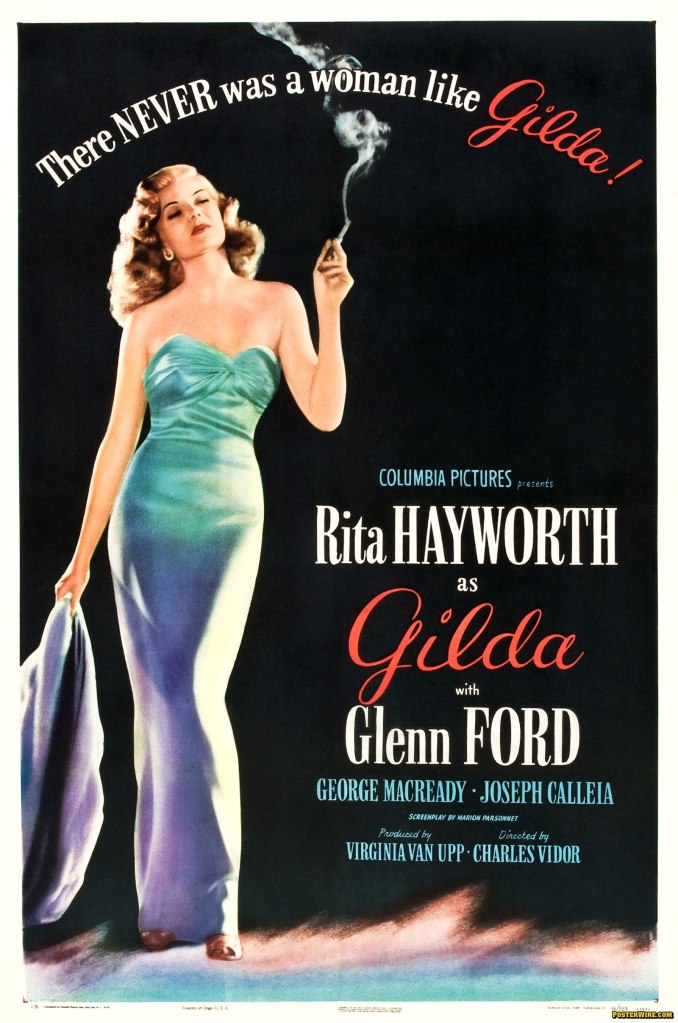 ‘Men fell in love with Gilda, but they wake up with me’
‘Men fell in love with Gilda, but they wake up with me’
When it comes to celluloid sasspots, there’s none more likeable and beguiling than Rita Hayworth’s Gilda, star of Charles Vidor’s 1946 film noir classic. In Gilda, a jaded cynic, a good bad girl with her eye on the money, Hayworth found the ultimate femme fatale, the woman every man wanted to love. The role sealed Hayworth’s status in Hollywood, and gave her an unforgettable celluloid legacy.
According to the posters, ‘There never was a woman like Gilda’, and clearly, there was never a wardrobe like hers either. Designed by Jean Louis, it reportedly cost $60,000 dollars, and it was money well spent. Despite the somewhat convoluted and far-fetched plot, the movie was a critical and commercial success, no doubt thanks to Gilda and her perpetual near nakedness – for despite that pricy wardrobe, a surprising amount of Gilda was on show. Playing for sensuality, Jean Louis designed a wardrobe that allowed Gilda to flash her creamy shoulders, and hinted at her bosom through diapahonous blouses. Rita’s beauty was the stuff of pin-up legend and in 1949 her lips were voted the best in the business by the Artist’s league of America. Unsurprisingly, endorsements by and adverts for Max Factor soon appeared.
The audience meets Gilda as, with an enticing sparkle in her eye, she throws back her hair (surely one of the most impressive entrances in movie history?), clad in a floor-length, off-the-shoulder chiffon gown with a belted waist. She seems innocent, but her next costume, a strong, Art Deco inspired look, complete with a back slit, sequin embellishment and some hefty jewellery proves otherwise.
In Gilda, it’s the eveningwear that stands out. Gilda liked to attract attention, and Louis played up to it with dramatic Grecian-inspired gowns, a fabulous sparkling opera coat, luxurious furs thrown over satin and, when she ‘re-launches’ herself as a nightclub singer, a dramatic midriff bearing costume complete with Oriental-inspired florals and an open, tie-up back.
However, the star of the wardrobe show is the strapless satin dress Gilda wears during the second rendition of Put the Blame on Mame. One of the most famous dresses of the 1940s, and supposedly inspired by John Singer Sargent’s portrait of Madam X, it allowed freedom of movement for Gilda’s striptease performance but was cleverly designed by Jean Louis to accentuate Hayworth’s figure a the star had recently given birth to her daughter Rebecca. The bow, tied at the waist, and the daring spilt draw attention to or disguise aspects of Rita’s figure, whilst a structured bodice moulded the silhouette and ensured the dress stayed up. Hayworth wore the dress with a casual and voluptuous ease, which surely only added to its iconic status.
According to the designer:
“It was the most famous dress I ever made. Everybody wonders how that dress can stay on her while she sings and dances . . . well, inside there was a harness like you put on a horse. We put grosgrain under the bust with darts and three stays, one in the centre, two on the sides. Then we moulded plastic softened over a gas flame and shaped around the top of the dress. No matter how she moved, the dress did not fall down.”
Before Jean Louis was employed by Columbia he worked in Paris, as a sketch artist, and later as a designer at Hattie Carnegie’s fashion house. This early training left him confident designing both day and eveningwear, and Gilda offered him the perfect opportunity to showcase these diverse skills. During two key scenes, Gilda wears a smart, businesslike two-piece pinstripe suit, cinched at the waist and layered over a white ruffle-front shirt. For its first outing, it’s accessorised with white gloves, a prim handbag and a trilby, in the second (and final) scene it’s worn without adornment. This design allows the audience to re-evalute Gilda. Despite her efforts to be bad, she really wants to do the right thing, and one suspects, to be accepted for who she is. Of course, the movie’s happy ending suggests that Gilda has found, and made peace with her identity, although you suspect she wouldn’t disown all her fabulous evening gowns.
Testament to both Rita and Jean Louis, the character of Gilda continues to have cultural relevance. British costume designer Joanna Johnston based Jessica Rabbit’s (who Framed Roger rabbit, 1988) on Gilda and the Shawshank inmates are enamoured by her.


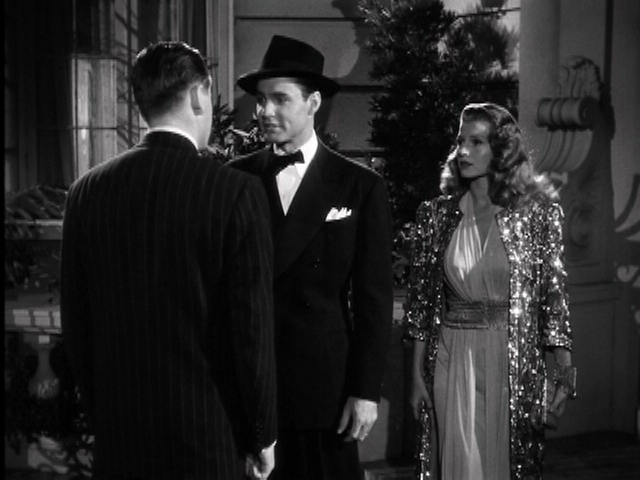

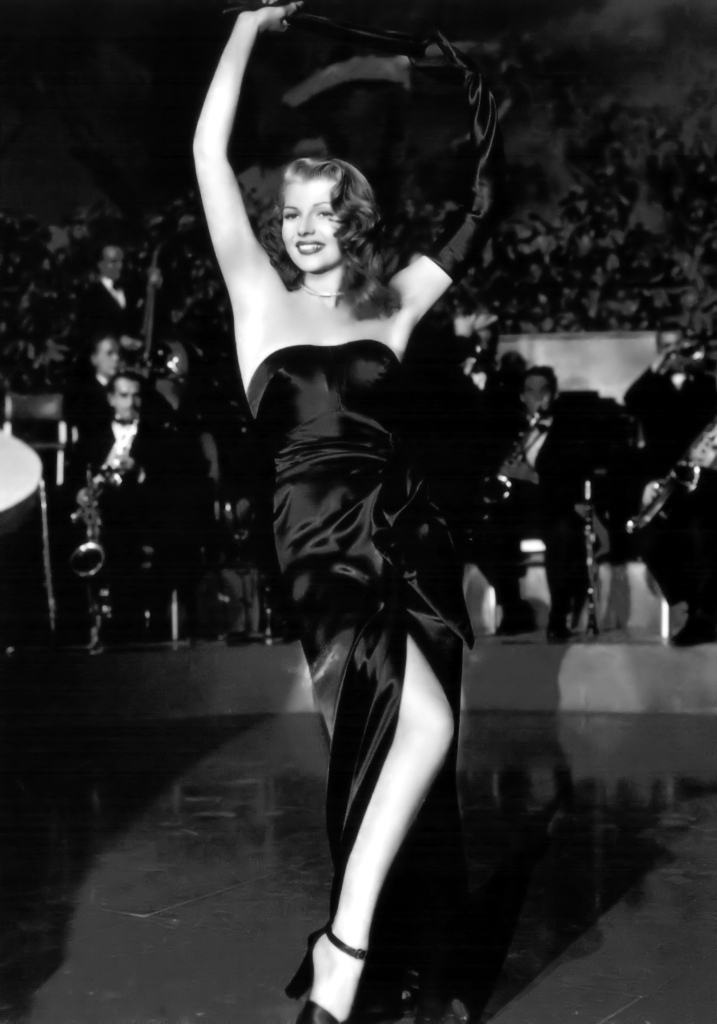
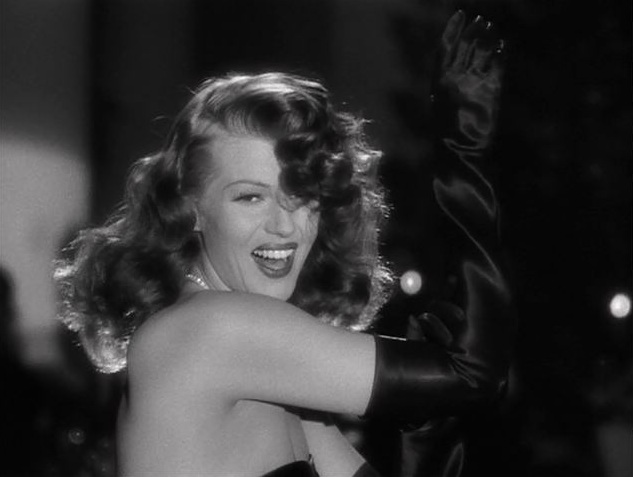
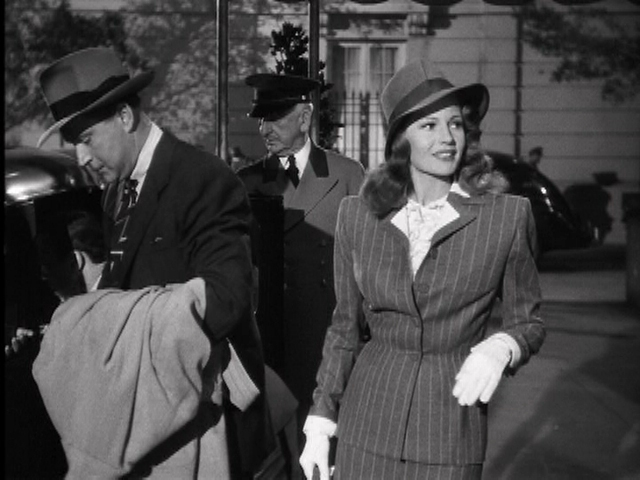
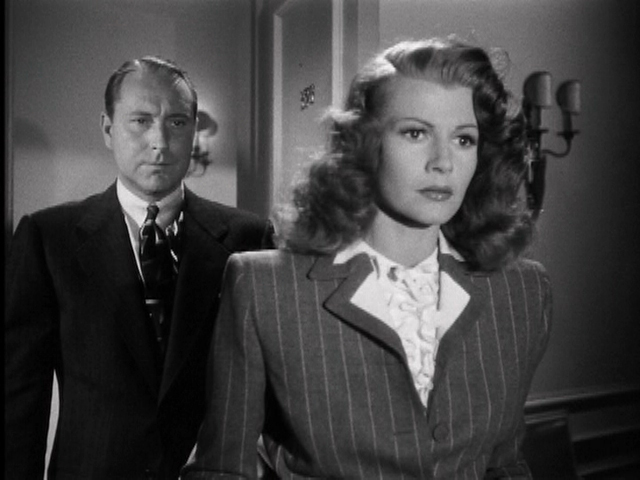

2 thoughts on “Gilda: Rita Hayworth as Gilda Farrell”